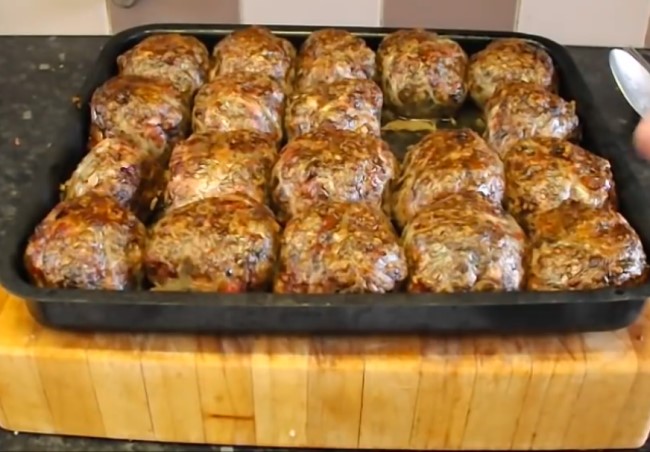Faggots: A Deep Dive Into the Traditional British Dish

Faggots, a traditional and historical dish from Britain, have stood the test of time. Known for their hearty and rustic appeal, faggots are more than just a meal — they are a representation of centuries-old cooking techniques and a resourceful use of ingredients. However, this term can also be controversial and offensive in certain contexts, making it essential to distinguish between its culinary significance and its inappropriate usage. In this article, we will explore the meaning of “faggots,” their origin, and the ingredients that make up this iconic British food.
What Are Faggots?
In the culinary world, faggots refer to a type of meatball, traditionally made from minced pork, offal (such as liver and heart), and a blend of breadcrumbs, herbs, and spices. These ingredients are formed into a round ball and typically served with rich, savory gravy. This dish has roots in working-class kitchens, where no part of the animal was wasted, making faggots a symbol of resourcefulness in cooking.
Faggot Meaning: Cultural Sensitivities
While faggots are a beloved dish in certain parts of the UK, the term “faggot” can also have a more negative connotation. In modern language, particularly in the United States, “faggot” is used as a derogatory term towards the LGBTQ+ community. This use of the word has been widely condemned and is considered offensive. As a result, it’s important to always be aware of context when using the word.
The term’s negative usage is completely separate from its culinary origins, but due to its offensive nature, caution should be exercised to avoid harm and misunderstanding. Despite this, the food known as faggots remains an essential part of British culinary history.
Faggot Food: A Traditional British Delicacy
Faggots first became popular in Britain during the Middle Ages, particularly in the Midlands and Wales. They are often associated with frugal cooking, where offal and less-desirable cuts of meat were transformed into flavorful dishes that could feed large families on a budget. The essence of faggots lies in their simplicity, with each ingredient serving a key purpose to enhance the overall taste.
Faggots are typically served with mashed potatoes and peas, creating a wholesome meal that has earned a place on the dinner table for centuries. The flavor profile is rich and earthy, thanks to the offal and herbs, and the accompanying gravy ties everything together, making the dish hearty and comforting.
What Are Faggots Made Of?
The ingredients of faggots have remained consistent through the years, although regional variations may exist. Generally, faggots consist of the following components:
- Minced Pork: The base of the dish, usually including pork liver and heart.
- Offal: In the true spirit of nose-to-tail eating, offal such as liver or kidneys is often included in the mixture to provide a deeper, more robust flavor.
- Breadcrumbs: These help bind the ingredients together and add texture.
- Herbs and Spices: Sage and thyme are commonly used, alongside salt and pepper to enhance the flavor.
- Onions: A key flavoring agent, adding sweetness and depth to the dish.
How to Make Traditional British Faggots
Making faggots is relatively simple, although it requires some time for preparation. Here’s a general step-by-step recipe for making faggots:
Ingredients:
- 500g minced pork (including liver and heart)
- 100g breadcrumbs
- 1 large onion, finely chopped
- 2 tsp dried sage
- 1 tsp dried thyme
- Salt and pepper to taste
- Flour (for coating)
- 1 pint of beef stock
Instructions:
- Prepare the Meat: Combine the minced pork, liver, and heart with breadcrumbs, onions, sage, thyme, and seasoning in a bowl. Mix until well combined.
- Shape the Faggots: Take small portions of the mixture and shape them into round balls, roughly the size of a golf ball.
- Coat in Flour: Lightly dust the faggots in flour to help create a nice crust during cooking.
- Fry the Faggot: Heat a pan with oil and fry the faggots until they are browned on all sides.
- Simmer in Stock: Once browned, transfer the faggot to a baking dish and pour over the beef stock. Cover with foil and bake in a preheated oven at 180°C for about 45 minutes.
- Serve: Serve hot with mashed potatoes and peas, drizzling the gravy over the top.
The History and Evolution of Faggots
Faggot was historically eaten by the working class in Britain, particularly in the Black Country and South Wales. As industrialization grew, so did the need for cheap, filling meals, and faggots became a staple for families looking for a hearty dish. The resourcefulness of using pork offal and other ingredients that might otherwise go to waste highlights the ingenuity of early British cuisine.
During the 20th century, however, the popularity of faggots declined as mass production of food took over, and people began favoring leaner, more processed meats. However, there has been a resurgence of interest in traditional dishes, and faggots are once again appreciated for their unique flavor and history.
Faggots Today
In modern times, faggots are still available in some butcher shops and traditional British restaurants. There are also ready-made versions sold in supermarkets, although they may not always use offal. The dish is celebrated for its rich flavor, but it’s also a nostalgic meal for many Britons who grew up eating it.
What Is a Faggot?
At its core, a faggot is a meatball made from inexpensive cuts of meat, traditionally offal. However, the word “faggot” has taken on various meanings over the years, some of which are positive and some negative. While it’s essential to recognize the cultural and historical significance of faggot as food, it’s equally important to be mindful of the potential harm that the word can cause when used outside of its culinary context.
The Importance of Preserving Culinary History
Faggot is part of a broader movement to preserve traditional foods and recipes. As more people embrace farm-to-table practices and reduce food waste, dishes like faggot become more relevant. They remind us that every part of an animal can be used to create something delicious, a principle that is at the heart of sustainable cooking.
In conclusion, faggot is a dish steeped in history, culture, and sustainability. Their rustic and resourceful origins have made them a beloved part of British cuisine, while their complex flavors have kept them relevant through the years. Whether you’re a fan of British culinary traditions or just looking to try something new, faggot offer a unique taste of history that’s worth exploring.

